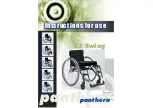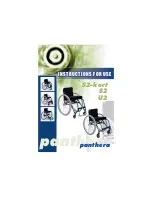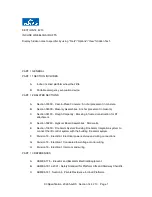
7. Brake Operation & Brake Maintenance
RUNNING HANDBRAKES
To apply the running brakes, squeeze the brake levers in an upwards direction.
PARKING BRAKES– TO BE OPERATED BY HAND.
To apply the parking brakes, push the black handle by hand towards the front of the wheelchair
To release the parking brake, pull the black handle by hand back towards the rear of the wheelchair
NOTE:Always use the parking brakes when the wheelchair/occupant are in a stationary position.
Always park the wheelchair on a level ground.
To adjust the whole of the brake unit, slacken off the two allen key bolts
. (Also see point 3 in this section for running handbrake adjust-
Remove all packaging from the wheelchair.
Lift up the folding back and click into position.
install footrests place left/right footrest over left/
right pegs at a 90
Kerb lifter—use the kerb lifter to raise the front castors.
Line up the front castors with the edge of the kerb. The attendant uses the kerb lifter to
wheelchair components such as armrests.
: Under no circumstances should this wheelchair be used as a seat in a motor vehicle. The






















